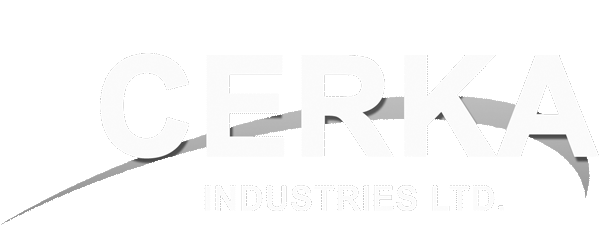Trailer Suspension Maintenance
Trailer Suspension TypesThe suspension systems incorporated into Cerka axles are designed to provide the trailer owner three basic functions:
All Cerka suspension systems are available in single and multiple axle configurations. Double Eye Leaf Trailer SpringsDouble eye springs have eyes formed in each end of the spring and are attached to the trailer as follows:
The articulation of this suspension occurs when the spring becomes loaded and consequently lengthens. The double pivot action of the shackle links accommodates this articulation and allows the system to move freely. In multiple axle installations the action is the same but with the additional movement of the equalizer assembly which serves to transfer instantaneous loads from one axle to another in an effort to "equalize" the load between the axles. Grease lubricated Suspension Bushings In the optional heavy duty attaching parts kits, the suspension bolts and equalizers have grease zerks which provide a lubrication path to the bronze bushing located in the spring eyes and equalizer. These parts should be periodically lubricated and inspected for signs of excessive wear, cracking, or hole elongation. If excessive wear, cracking, or hole elongation exists, all links and worn parts should be immediately replaced. Slipper Leaf Trailer SpringsSlipper springs have an eye formed in one end only with the other end formed into a reverse curve. The attachment of these springs is a follows:
The articulation of this suspension occurs when the rear end of each slipper spring slides against the wear surfaces provided in the rear hangers or equalizers. This suspension is also available in single and multiple axle configurations. Note: Failure to do proper and periodic maintenance of these important structural parts may result in sever and catastrophic damage or injury to property. Torflex Trailer SuspensionThe TORFLEX suspension system is a torsion arm type suspension which is completely self contained within the axle tube. It attaches directly to the trailer frame using brackets which are an integral part of the axle assembly. The TORFLEX axle provides improved suspension characteristics relative to leaf spring axles through the unique arrangement of a steel torsion bar surrounded by four natural rubber cords encased in the main structural member of the axle beam.
The wheel/hub spindle is attached to a lever, called the torsion arm, which is fastened to the rubber encased bar. As load is applied, the bar rotates causing a rolling/compressive resistance in the rubber cords. This action provides the same functions as conventional sprung axles with several operating advantages including independent suspension. Inspection and Replacement All the components of you suspension system should be visually inspected at least every 10,000 km for signs of excess wear, elongation of bolt holes, and loosening of fasteners. Whenever loose or replaced, the fasteners in you suspension system should be torqued as detailed in the chart below. Suspension Fastener Torque Values
Worn spring eye bushings, sagging or broken springs should be replaced using the following method.
If the equalizer or equalizer bushings must be replaced, follow the instructions above for lifting and supporting the trailer unit and then proceed as follows:
All of the pivot points of your suspension system have been fitted with anti-friction bearing materials which do not require routine lubrication. However, when otherwise servicing the unit, these pivot points may be lubricated of you so desire. Except for periodic inspection of the fasteners used to attach the TORFLEX axle to the vehicle frame, no other suspension maintenance is required on TORFLEX axles. They are, of course, subject to the maintenance and inspection procedures regarding brakes, hubs, bearings, seals, wheels and tires as outlined in this manual. Warning! Do NOT WELD on the TORFLEX Beam. It has rubber cords inside and the heat generated by welding could damage the cord. |
||||||||||||||||||||||||||||||||



